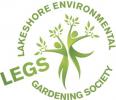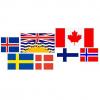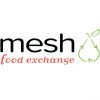Blog Post: Eating Locally: A "How To" Guide
Why Eat Locally?
We all sit down three times a day for a meal; or if your schedule is as busy as mine, perhaps you wolf down three servings of “whatever I had time to grab” while running to your next task of the day. Regardless of how structured your mealtimes are, food is a critical part of all our lives. Despite this, few of us consider exactly where our food comes from and how it gets to the plate in front of us.
Canada has become highly dependent on food imports from other nations around the world. Farm Folk City Folk, a Vancouver based not-for-profit society dedicated to supporting local, sustainable food, has found that the average North American meal contains ingredients from 5 countries in addition to Canada. Further they suggest that each North American meal travels an estimated 2400km to get from the farms to the plate in front of you. The shipment of these foods over vast distances results in high emissions of CO2 which further contributes to global warming. However, this trend can easily be changed and the first step starts with you and your food choices.
Many of the foods that are imported to Canada can be and are produced locally! By choosing locally grown products you will be reducing your food miles and helping lower your carbon footprint. For example, sustainable lifestyle organization Think Local, has found that on average imported eggs travel 5373km to get to Vancouver. They have found that buying locally produced eggs would save 110% of each egg’s weight in green house gas emissions. Similar reductions in greenhouse gas emissions would occur by choosing to buy local produce like raspberries and strawberries and various meats like beef and salmon.
But eating locally does more than just reduce GHG emissions. Incorporating locally grown food into your diet is an easy way to help improve our environment while contributing to your local economy and improving personal and social health! By knowing exactly where your food is coming from, you can make informed decisions to purchase food that is made sustainably and produced in a socially responsible manner that still arrives fresh and delicious on your plate.
What is the definition of eating local?
There is no one definition for local food. While some Vancouverites stick strictly to their 100 mile diet (consuming food that is produced no further than 100 miles from their home) others may consider local to mean within 500 miles, or grown within the province.
What is important to consider is exactly what you are supporting when you choose the food you eat. Every sustainable consumer choice, no matter how small, can make a positive impact! Make the choice that makes the most sense for you and your community!
As a Vancouverite, there are many ways to do your part to support the local food economy. Shopping at local community markets, eating out at restaurants that support local food, getting involved in community gardens and even growing some of your own food.
There are many fresh and delicious foods easily accessible to BC residents that are grown in your own backyard! Stay tuned for updates on the best ways to eat locally in Vancouver and the surrounding area, and join the thousands of people who are working towards creating a more sustainable region!
Category:



































Comments
I really enjoyed reading this piece and was surprised to learn that imported foods travel so far to get to Vancouver! I guess I should keep shopping at Save on Foods on campus then! I sometimes even jog there on nice weathers :)